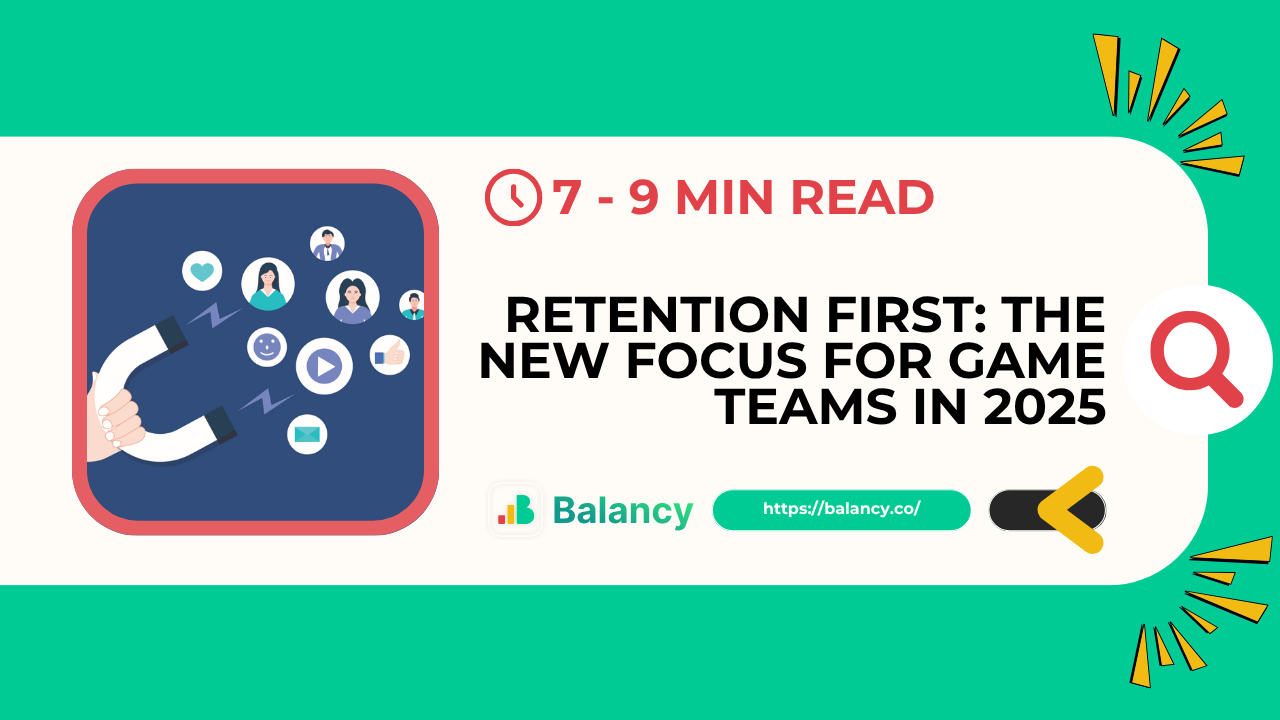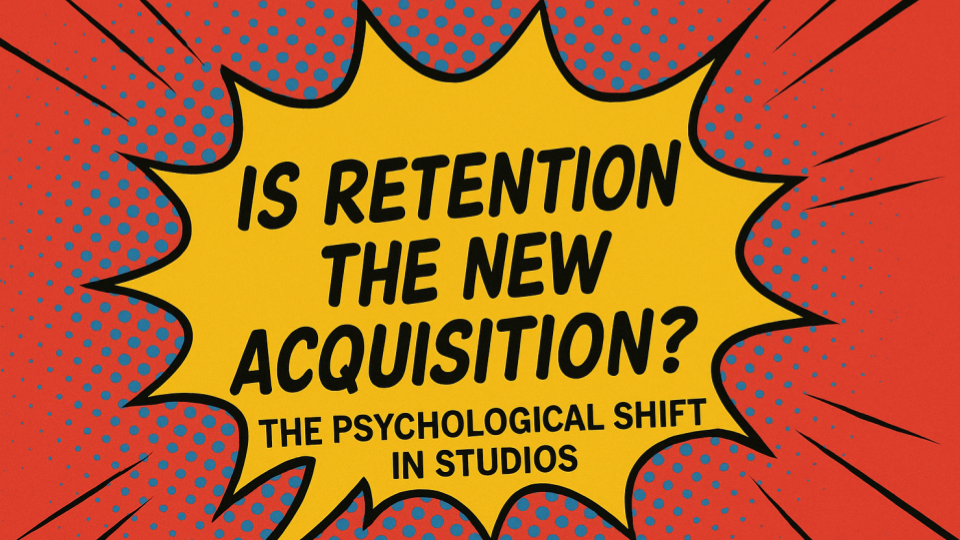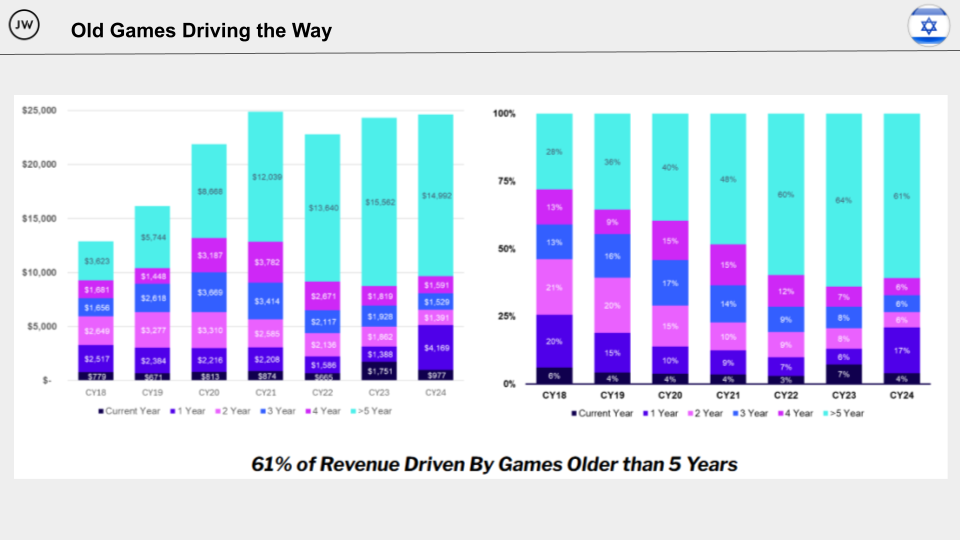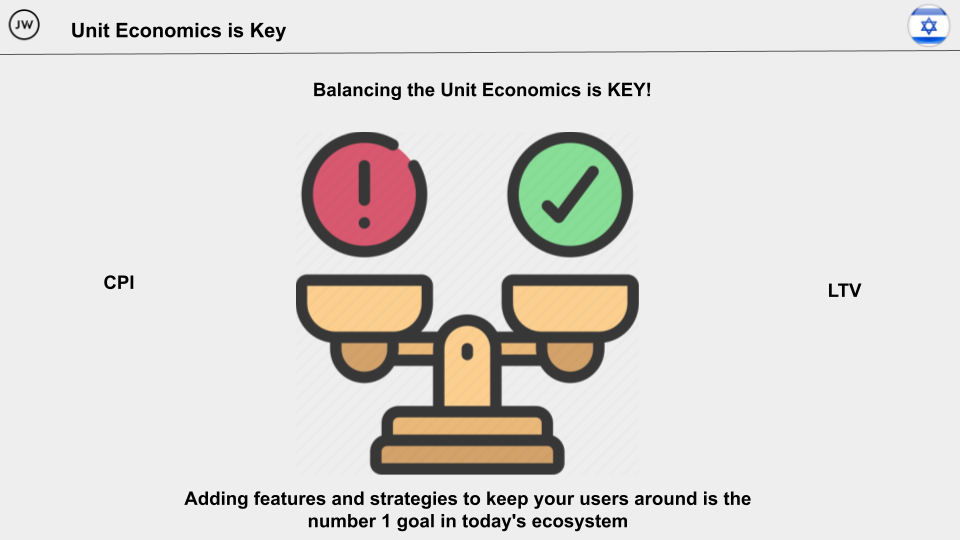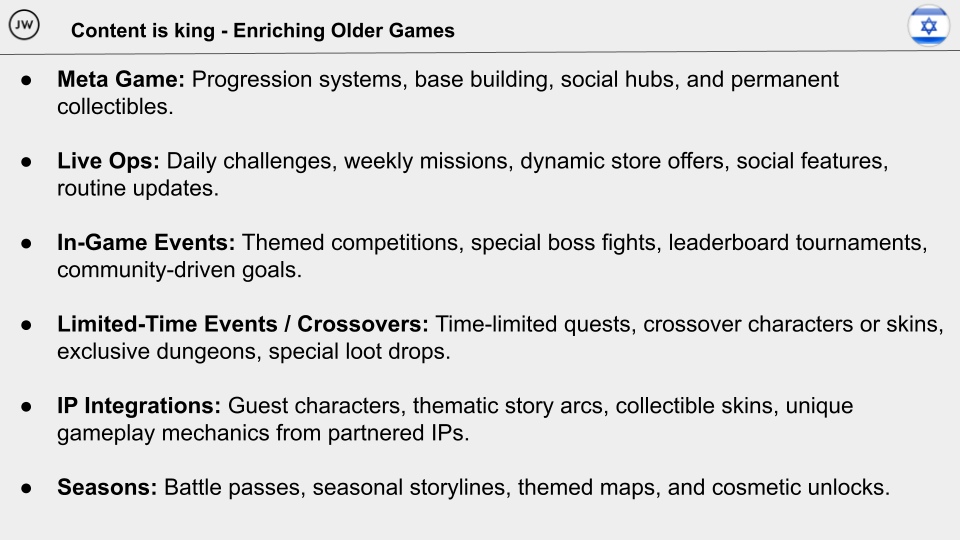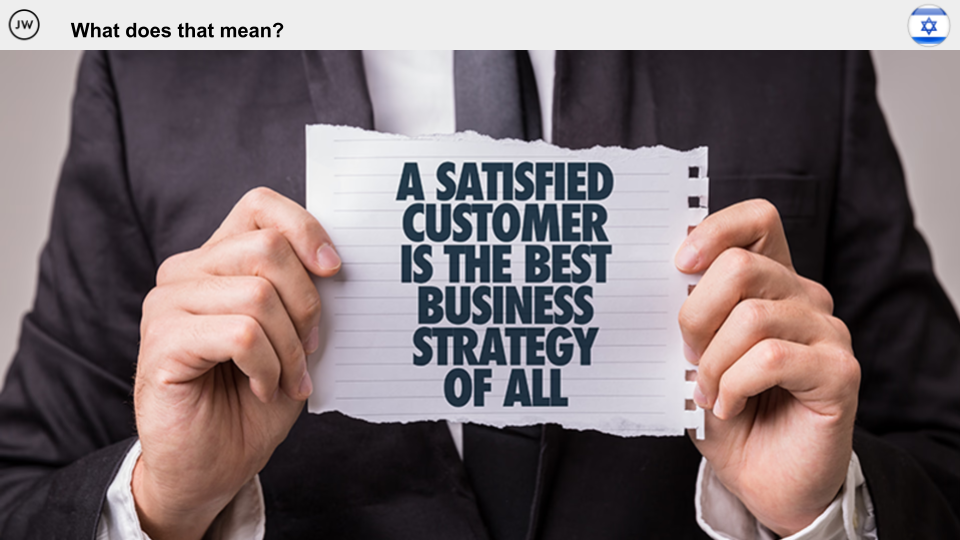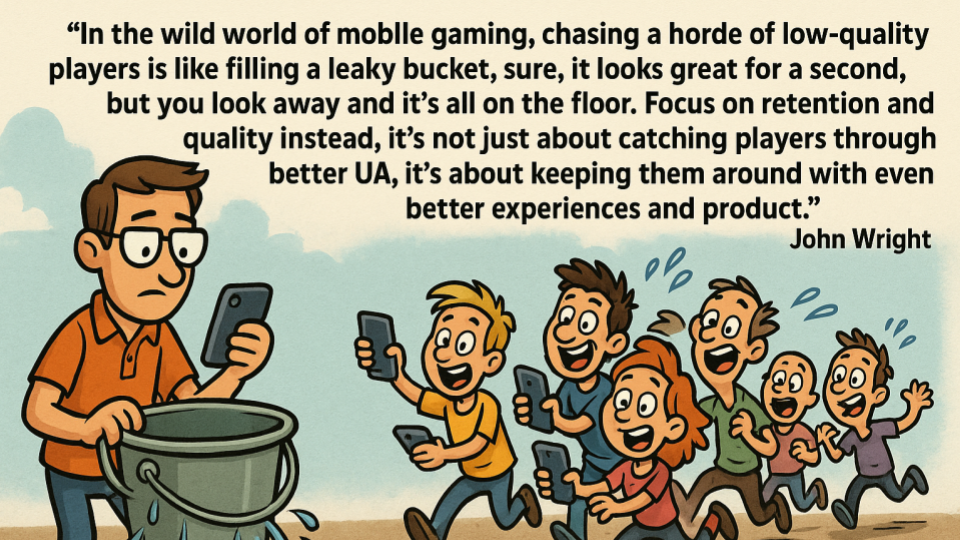Featuring insights from John Wright, CEO at Turborilla, & LiveOps tips from Balancy
Following the Fingersoft Way Forward summit and John Wright’s presentation on the future of mobile gaming, one message cut through loud and clear:
Retention is the new acquisition.
In this article, we’re spotlighting the key shifts driving that reality—and sharing actionable LiveOps tips from our Product Owner, Michael Khripin, to help you build systems that keep players engaged, spending, and coming back for more.
Loyalty Over Installs
From John Wright’s presentation at the Fingersoft Way Forward Summit: “Retention is the New Acquisition” – a core thesis slide illustrating the shift in focus for modern game teams.
The golden era of cheap installs is over.
- CPIs are climbing
- ROAS is shrinking
- And breakout hits? Rarer than ever
UA alone no longer guarantees success. Top studios have already shifted their mindset: the real metric that matters is how long players stay—and how well your game keeps up once they’re in.
Why Old Games Are Still on Top
From John Wright’s presentation at the Fingersoft Way Forward Summit: “Old Games Driving the Way” – a visual showing how long-running titles outperform new releases through consistent content and player investment systems.
The best-performing games of 2025 aren’t shiny new launches—they’re titles with years of LiveOps behind them.
What keeps them at the top?
- Meta Games: Base building, social hubs, collection systems
- Live Ops: Daily missions, segmented stores, evolving events
- In-Game Events: Leaderboards, community goals, special content
- Crossover Content: IP drops and brand collabs that refresh the loop
- Season Passes: Predictable structure, ongoing value
💡 This isn’t surface-level content. It’s deep engagement architecture that pays dividends long after install day.
The UA Trap: Costs Up, Margins Down
From John Wright’s presentation at the Fingersoft Way Forward Summit: “Unit Economics Is Key” – a graphic highlighting the growing imbalance between rising CPIs and stagnant LTV, reinforcing the need for stronger retention strategies.
Even efficient UA can’t save poor retention or weak monetization.
- Platform fees eat into profits
- App stores limit first-party data
- UA costs are up, and LTV hasn’t caught up
Acquisition is no longer efficient unless your post-install journey delivers value—over time, across segments, and without friction.
The D2C Rebellion
From John Wright’s presentation at the Fingersoft Way Forward Summit: “D2C – Rebalancing Unit Economics” – a slide outlining how regulatory changes and web shop strategies are helping studios regain control over margins and player relationships.
Studios are no longer waiting for platform policy shifts. They’re building around them:
- Web shops cut out marketplace fees
- First-party data enables better segmentation
- Custom billing flows unlock pricing flexibility
- New regulations (like the Digital Markets Act) support the move
D2C isn’t just a margin play—it’s a strategic tool to own the player relationship and strengthen retention through personalized value.
What Winning Studios Are Doing in 2025
From John Wright’s presentation at the Fingersoft Way Forward Summit: “Content is king” – a breakdown of the core content systems—meta games, events, IP integrations, and seasons—used by top-performing games to drive long-term engagement and retention.
Retention-first teams are doubling down on:
-
- ROAS-optimized UA to attract the right audience
- Rewarded UA via offerwalls and engagement-based models
- Community marketing, UGC, and social-driven discovery
- Segmented stores with dynamic, behavior-driven pricing
- Game Events and Scripts that adapt in real-time
- ROAS-optimized UA to attract the right audience
The pattern is clear: the most successful games don’t just monetize moments—they design momentum.
Better LiveOps = Higher Retention
From John Wright’s presentation at the Fingersoft Way Forward Summit: “What Does It Mean?” – a framing slide that introduces the central question around shifting priorities in the mobile games industry, setting the stage for a deeper focus on retention.
Smart LiveOps turns casual players into repeat spenders.
Retention grows through systems that connect, adapt, and build momentum—layer by layer.
Below, our Product Owner Michael Khripin shares practical LiveOps tips your team can apply to create scalable, sustainable retention.
Bonus Tips from Our Product Owner, Michael Khripin
To power your LiveOps in 2025
💡The more interconnected your LiveOps is, the more self-sustaining it becomes.
Tip #1: Design the flow, not just the features.
Each LiveOps layer should lead the player somewhere.
A reward from a daily login should point to an event.
The event should tease a bundle.
The bundle should link to a long-term goal.
No dead ends.
Tip #2: Align timing across systems.
If your shop resets at noon, but your events reset at midnight, and your streak resets at first login…
Players get confused fast.
Sync your cycles for smoother habits and better habit formation.
Tip #3: Build internal maps of your systems.
Literally draw it out.
How does one feature feed the next?
Where are the blockers?
Having a LiveOps ecosystem diagram is a game-changer for spotting gaps and building smarter loops.
💡 If your monetization ends at the first purchase, you’re treating spenders like finishers, not starters.
Tip #1: Unlock value, not just remove pain.
No-Ads packs take something away (ads). Great.
But the next offer should add something: boosters, perks, access.
Reward the buyer mindset—don’t just relieve friction.
Tip #2: Segment your follow-up offers.
The next deal after No-Ads shouldn’t look the same for every player.
Segment based on their session count, gameplay style, and spending pace.
Personalization = conversion.
Tip #3: Use soft gates to guide payment momentum.
Want to introduce the second purchase naturally?
Place soft content gates that hint at value without blocking progress.
Players who want the edge will convert willingly.
💡Have you ever cut ads and watched revenue go up? Monetization isn’t just about the moment of payment. It’s about whether players care enough to stick around and spend again.
Tip #1: If your No-Ads buyers have nothing left to spend on, you’re losing your most engaged users.
Always follow up with mid-tier IAPs: boosters, bundles, cosmetic upgrades—whatever fits the loop.
Tip #2: Watch Ad-to-Playtime Ratio.
If your players spend more time watching ads than actually playing, that’s not monetization—it’s erosion.
Track this ratio and set limits per session.
Tip #3: First ad watched is trust. Second is routine. Third is risk.
Test your rewarded ad frequency carefully.
After 3+ ads in one session, you’re entering fatigue zone.
Use cooldowns or diminishing returns to avoid it.
💡A $0.99 buyer is not a $9.99 buyer yet. Your pricing model isn’t a menu—it’s a story you tell, one choice at a time.
Tip #1: Use price anchoring intentionally.
Don’t just show a $9.99 pack.
Show it next to a $19.99 option to make it feel like the smarter buy.
Tip #2: Observe offer burnout.
If your offer conversion dips below 1% over 3+ exposures—retire it, repackage it, or replace it.
Don’t keep showing the same thing hoping for magic.
Tip #3: Context > calendar.
Instead of triggering offers by day count, trigger them by behavior:
Session depth, level ups, missed streaks.
That’s when the player feels the offer is timely.
Final Thought
From John Wright’s presentation at the Fingersoft Way Forward Summit – a closing statement reinforcing that long-term success hinges on designing systems that keep players engaged, not just acquired.
2025 isn’t about acquiring more players.
It’s about keeping the ones you already have—and helping them fall in love with your game over and over again.
At Balancy, we help studios turn retention strategy into action:
- Personalized offers
- Segmented events
- Dynamic stores
- Live A/B testing
All managed without blocking your devs.
🎯 Retention is the new acquisition.
Let’s help you build systems that prove it.
